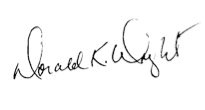This post is part of The Plank Center’s Legacies from Legends in PR Series that was begun in recognition of the 40th Anniversary of the Public Relations Student Society of America in 2007.
One of the world’s most widely published public relations scholars and professor of public relations at Boston University. Worked in corporate, agency and university public relations. Is a past president of the International Public Relations Association, Fellow IPRA, a long-time board member with the Arthur W. Page Society and the Institute for Public Relations, Research Fellow IPR, and the founding editor of PRSA’s Public Relations Journal.
For many years I’ve told my students the most important public relations opportunity they will ever face could be convincing organizations to hire them for their first, entry-level jobs in our field. Equally significant might be convincing the organizations that it’s okay to hire them even though they majored in public relations.
Nobody could have any difficulty with the first suggestion. These are difficult times of a tight economy where opportunities are limited, jobs are few, and organizations understandably must hire only the brightest and the best. Wise public relations students do things that will set themselves apart from their peers in much the same way that the best college athletes make themselves known to professional sports teams. Just as the best athletes usually attend colleges known for excellence in their sports, the best public relations students should seek out universities that are uniquely noted for excellence in public relations education.
Most of these best athletes spend countless hours practicing and preparing so they can perform better than their teammates, and the best public relations majors devote lots of time to activities that will set them apart from their peers, including working on campus newspapers, being actively involved with PRSSA chapters, gaining internship experience and being part of their university’s on-campus public relations agency.
While the second suggestion above is strange and confusing, it is also something that all public relations majors need to know about. Unfortunately, we haven’t done a very good job of implementing quality control in public relations education. More than 35,000 students now study public relations at nearly 700 U.S. colleges and universities and many of them will never get a job in our field. Savvy public relations majors take steps to make certain they are the ones who do get hired.
Another unfortunate reality is that each year a good number of internships and entry-level public relations jobs go to students who majored in disciplines other than public relations. Educators in our field should be more embarrassed than we are about this reality, which would not exist if we were able to deliver an end-product of graduates that prospective employers could not do without.
Part of the problem is caused by universities that hire mainly practitioners without terminal degrees to do teaching that generally is focused on techniques. Equally to blame are institutions that only hire scholars, some with minimal experience in the practice, and emphasize theory in their teaching. The best programs provide an appropriate blend of both theory and practice. They also encourage research that focuses on information practitioners want or need, and have recently revised their curriculums to accommodate the reality that public relations is in the midst of a revolution that involves new audiences, new channels, new kinds of content and new measurements.
Although the road to that first, good public relations job currently contains hills, curves and potholes, none of these obstacles should be too difficult to overcome for the brightest, best and most hard-working public relations graduates.
Published: 2009
